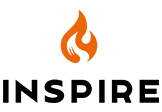Internet of Things: hip jargon or reality? |
|
by David Dwyer on 03/08/2015 |
|
The Internet of Things, which is regularly shortened to IoT, is, at its most basic level the principle of connecting any device with an on/off switch to the internet. It's become a hot topic within technology and Internet circles with many major brands investing considerable Research & Development budgets into being the first to market. Doing so gives these brands plenty of PR coverage, but in some cases, critics have suggested that the exposure it brings is really the end goal of these early moves. Just because you can do something, doesn't necessarily mean you should. So is it all hype, is there a genuine future or is it the stuff of Science Fiction being forced into present day fact? Here are a few examples of connected devices. Connected Toaster http://www.livinginternet.com/i/ia_myths_toast.htm Volvo Machine to Machine Phillips Hue Hue enables users to alter the lighting within their home via their smartphone or tablet. It's more than just a digital dimmer switch though; the actual colour of the lights can be changed quite dramatically changing the entire look and feel of a room. Users can also save presets. For example there might be a particular lighting set-up that is preferred for reading books or one that is simply for relaxing. The really smart element of the technology is the ability to set alerts and reminders. If you were baking a cake, you could set your lights to both change colour and blink to make you aware that it is ready. Cloudwash Washing Machine Cloudwash: the connected washing machine from Berg on Vimeo. Cloudwash is a prototype connected washing machine. We created Cloudwash to explore how connectivity will change the appliances in our homes… and to figure out what new features will be possible. Read more here: http://blog.bergcloud.com/2014/02/25/cloudwash/ They have simplified the machine and stripped it down to its most commonly used functions, resisting the temptation to just add a controller to the existing standard, and often very complicated washing machine, set-up. It's a great example of IoT technology forcing product designers to ask a broader question – “How can we make this machine better.” The smartphone application has a number of clever features. They range from the simple, such as alerting you that your washing is about to be completed, through to the ingenious ability to delay the final spin cycle in real-time. The motivation for the delay might be a desire for extremely fresh clothes. If you are out of home and not able to remove the clothes from the machine personally for a number of hours, the clothes will lose their freshness. Or you may have a sleeping baby in the house and don't want to risk the noisy spin cycle waking your little one. Whatever the motivation, this little simple function is a fantastic practical example of IoT solving a real world problem. Final Thoughts
David Dwyer is Managing Director of Inspire Web Development. He has years of experience in a range of web and IT roles plus seven years in sales and marketing in a blue-chip FMCG company. David’s academic and professional qualifications include a BA (Hons) in Business Economics (Personnel & Ergonomics) from the University of Paisley, an MSc in Information Technology (Systems) from Heriot-Watt University and PRINCE2 Practitioner-level certification. He is also an active member of the British Computer Society, Entrepreneurial Exchange and Business for Scotland.
Follow Inspire on Twitter @inspireltd and @developersos |
|
Digital Trends, Internet of Things, Smart Phones, Technology Innovation, The Evolving Web, User eXperience, UX Design
|




















